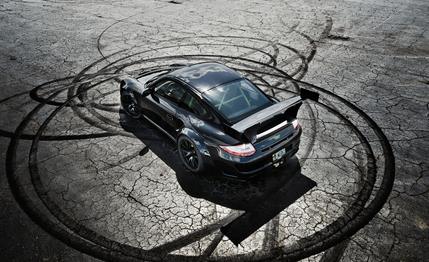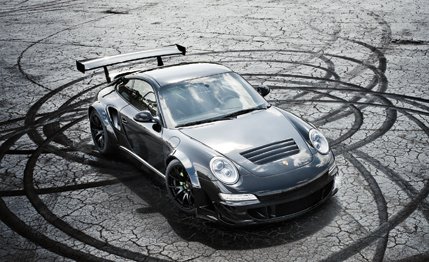 Specialty File
Specialty File


Naveen Maraj, 34, is president of Champion Motorsport, a branch of the Maraj family’s sprawling Champion Porsche dealership in Pompano Beach, Florida. It was Maraj’s intention to scoop a $161,650 2011 Porsche 911 Turbo S right off the showroom floor, boost its output by 110 horsepower, and bolt on the bodywork from a full-race GT3 RSR. “I really liked the idea of an all-wheel-drive RSR for the street,” he says. “I thought, ‘How hard could it be?’ ”
“Oh, don’t even ask,” interrupts Tim Munday, who became the project leader. “I’ve built maybe 100 racing Porsches, and two dozen of them have been RSRs.” In 2005, in fact, Munday built the RSR that won the GT2 class at the 24 Hours of Le Mans. “Man, this car was a hundred times harder than any of them because it had to be cosmetically perfect and luxurious front to back. I thought it would take six months. It took a year. I’ll tell you, I’ll never do another. The crew might build a second car. But not me.”

Like carpenter ants marching in file, the problems were relentless. “We bought all the necessary bodywork,” recalls Maraj, “but it was built for race cars, which have bad fits—those panels don’t have to be perfect, just functional. I couldn’t have a luxury sports car with bad panel gaps. So we went from massaging and customizing the race-car panels into making our own in the carbon-fiber shop. Then we cut off the roof ’cause you can’t have a sunroof on an RSR clone. For one thing, the sunroof adds 29 pounds way up high. So we got ready to install a carbon-fiber roof, but then we realized we’d have to run a full roll cage under a carbon roof, and a full cage is a hassle to climb over, not acceptable in a street car. We wanted just a half cage in the back of the cabin. So we ordered a new headliner and Porsche steel roof—it’s a GT2 RS roof, so it’s thinner—and installed that. But that wasn’t the end of it. Next, how do you integrate the air-conditioning condensers and electric cooling fans into bodywork designed for no A/C? All the plumbing, figuring out where to house the components—that was two months of work alone. Even small stuff like the windshield-washer reservoir—it used to be in the fender, but we ran out of room, so we had to move it behind the radiator ducting in the trunk. The car is now eight inches wider than a Turbo S, so the bumpers had to be created from scratch. They won’t fit any other car in the world. We’d get into these binds and want to tear our hair out. I just decided to be patient and think our way through things.”
The next migraine was the front suspension. “We wanted RSR uprights,” says Louis Milone, Champion’s technical director, “but how do you get the front driveshafts to pass through? Turns out we had to modify them, then have Ohlins make a unique set of TTX four-way-adjustable dampers.” The blade-type anti-roll bars are also from an RSR but significantly massaged.